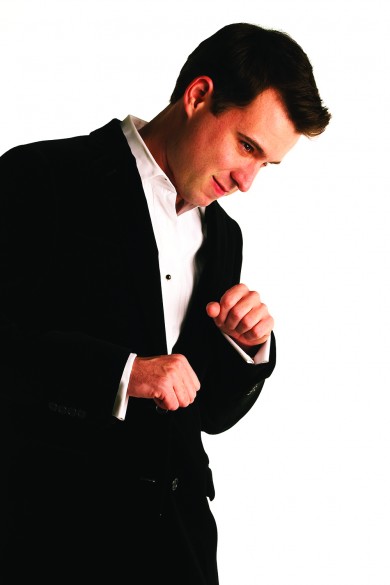Seraphic Fire delivers chant program with customary polish and nuance
The critically acclaimed choral ensemble Seraphic Fire performed Wednesday night at St. Sophia’s Cathedral in Miami. Appropriate to the venue, the concert consisted of plainchant from the Medieval period, as well as various polyphonic works based on that repertoire.
Although the program was long, lasting over an hour and a half, the group chose to present over twenty separate pieces without intermission or break. The works were organized into five sections by the liturgical calendar dates on which they would appropriately be performed, beginning with Palm Sunday, running through Maundy Thursday, Good Friday, Holy Saturday, and Easter Sunday.
Overall, the concert was characterized by the polish, virtuosity, and nuanced attention to historically accurate performance practice audiences have come to expect from this ensemble. As artistic director Patrick Dupré Quigley noted in his brief pre-concert remarks, while modern audiences are used to chant performed mainly by low voices, Seraphic Fire’s disposition of vocal forces mirrored what the original music would have sounded like, replacing castrati and boy soprano parts with countertenors and sopranos.
The group also took full advantage of the acoustics of the small cathedral, breaking into antiphonal choirs or isolating soloists and moving around the space between works in a manner consistent with historical practice.
The use of the hidden offstage choir in Gregorio Allegri’s 17th-century setting of Psalm 51 (the eponymous Miserere) was especially effective, and Jessica Petrus’ fluid coloratura soprano in the responds refrains was singularly striking. Also making a strong showing throughout the concert were baritone Quigley and bass Thomas McCargers in the chant sections of the program.
Other highlights of the evening included Carlo Gesualdo’s tenebrae responsory motet, Jerusalem, surge. The choir navigated Gesualdo’s changeable harmonies and unconventional polyphonic devices adroitly, effecting subtle and evocative shadings of tone color. Likewise, the imitative and intricate contrapuntal writing in Clemens non Papa’s sacred motet Crux fidelis was highlighted by the ensemble to great effect.
Thomas Luis de Victoria’s O Crux, Ave, spes unica was also well performed, proceeding directly from the chant Pange lingua. The sudden shift to its bright polyphony and soprano gymnastics provided an artful contrast to the previous piece.
The more modern fare on the concert, Poulenc’s O, mes très chers frères and Maurice Duruflé’s Ubi Caritas, provided subtle diversions in the first two “days” of the program. Both compositions featured the same reliance on chant materials and polyphonic treatments as the rest of the works on the concert, but use the more modern harmonic languages of these composers. The Poulenc was particularly well done and balanced the Palestrina motet and two chants that preceded it.
Friday night’s concert in Coral Gables is sold out. The program will also be repeated 8 p.m. Saturday at All Saints Episcopal Church in Fort Lauderdale and 4 p.m. Sunday at All Souls Episcopal Church in Miami Beach. seraphicfire.org; 305-285-9060.
Posted in Performances
Leave a Comment
Thu Jan 15, 2015
at 1:06 pm
No Comments





